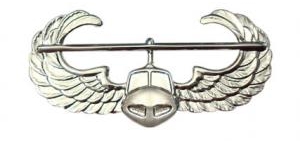 Air Assault School
Air Assault School
Air Assault is said to be the toughest 10 days in the Army, but when you graduate, you come out with a sense of pride you never had before. Air Assault includes three different phases, which teach you everything you need to know in order to conduct air assault operations:
- Air Assault Operations and Aircraft Orienteering
- Sling Load Operations
- Repelling
Before you start phase one, you must first complete zero day. This is one of the hardest days in the course; it tests your physical and mental toughness. On this day, you first have to complete an obstacle course. In order to pass you must complete two mandatory obstacles and all but one of the several non-mandatory obstacles. After the course, you conduct a two-mile run in 18 minutes or less. In between each event the Air Assault Sergeants keep you busy with pushups, flutter kicks, front-back-goes, and additional exercises to ensure you are tough enough to complete the rest of the course.

Phase one, Air Assault Operations and Aircraft Orienteering, consists of three days of classroom study. The first thing you learn is aircraft safety, followed by instruction on how to set up landing zones for sling-load operations, as well as speed, weapons crew members, and more about all of the popular aircraft used in today's Army, such as Blackhawks, Apaches and Chinooks. Along with basic orientation to helicopters, you learn medivac operations, such as how many casualties each type of helicopter can carry, and how to properly call in a nine-line medivac. You also learn different hand and arm signals to guide in a helicopter to hook up a sling load or to land on a landing zone. On the third day you take two tests, a 50-question written exam followed by a hands-on test to ensure you know the required hand and arm signals. On the second morning of training, you must conduct a six-mile road march with a 40-pound rucksack and weapon in one and a half hours or less.
Phase two begins on day three once testing is complete. It starts out with classroom exercises, but most of the second phase is spent outside conducting hands-on sling load training. The classroom studies consist of learning the different weights of the various sling loads and how much weight different binders and sling sets can carry.
The sling loads you are tested on are the HMMWV, cargo net, A-22 cargo bag, M-149 water buffalo, and a fuel blivet. For three days, you learn how to rig the sling loads and how to properly hook them up to a helicopter. The tests consist of another 50-question written exam and a hands-on test where you inspect four different sling loads and have to find three of the five deficiencies on each in two minutes.
The third and final phase is the repelling phase. This is where all the hard work from the first two phases pays off. You start out learning how to tie a hip repel seat in 90 seconds or less. Then you spend three days learning how to repel with no gear, with your weapon and LBE, and finally in full combat gear, which consists of your LBE, weapon and rucksack. The test consists of tying your repel seat in 90 seconds or less and then properly repelling three times with the different gear on. After the testing is complete, you get to repel out of a UH-60 Blackhawk helicopter. You're not done yet, though. The next morning you must conduct a 12-mile road march in three hours or less, again with your 40-pound rucksack and weapon.
Though it is physically and mentally demanding, once it is complete, you get to wear the Air Assault badge proudly on your chest and have a sense of accomplishment knowing you endured though some of the most difficult training the Army has to offer.
For more information, click here.











